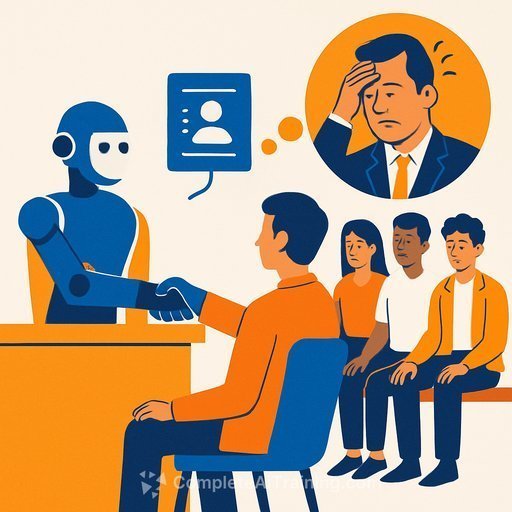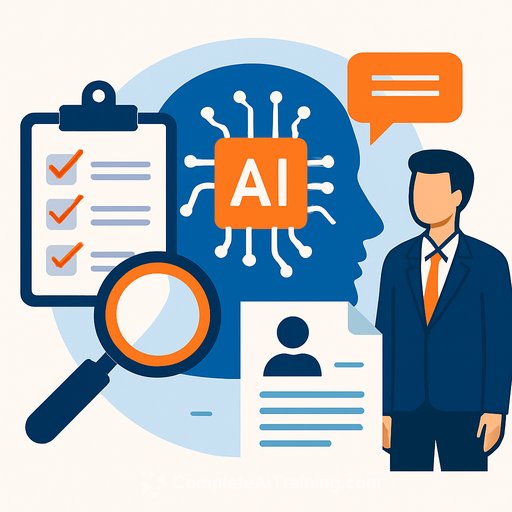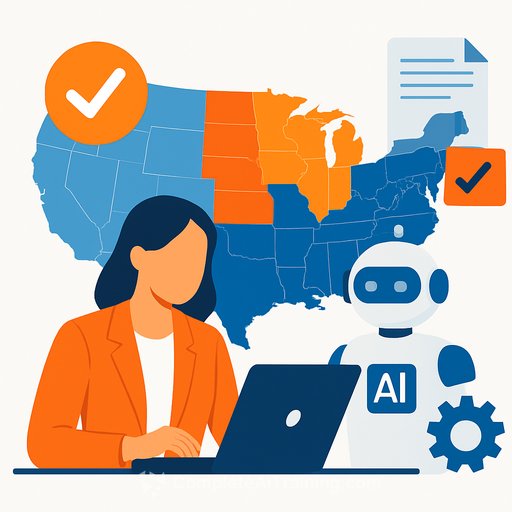Amazon Cuts 14,000 Corporate Roles to Double Down on AI Efficiency: What HR Should Do Now
Amazon will lay off roughly 14,000 corporate employees, tying the move to cost control and a bigger bet on AI-driven efficiency. Leadership has framed this as a shift from human-heavy operations to technology infrastructure-especially across AWS and core retail systems.
At the same time, the company plans to hire 250,000 seasonal workers for warehouse and transportation roles. This mix-corporate reductions with frontline ramp-ups-signals a reallocation of spend and a reconfiguration of work.
Key facts
- Announcement date: Tuesday, October 28, 2025.
- Corporate roles impacted: ~14,000.
- AI investment: US$10B for a new AI campus in North Carolina; deeper AI integration across Alexa, e-commerce, and AWS.
- Sentiment: "This generation of AI is the most transformative technology we've seen since the Internet," said Beth Galetti, SVP for HR Experience and Technology.
- Perspective from industry: "A tipping point away from human capital to technological infrastructure," said Neil Saunders of GlobalData.
- Workforce scale: ~1.5 million employees globally; second-largest U.S. private employer after Walmart.
Why this matters for HR
The message is clear: headcount is shifting from generalist corporate roles to automation, data, and AI platforms. HR leaders will need sharper workforce planning, faster reskilling, and a tighter partnership with tech, finance, and legal.
This isn't only about cuts. It's a long-term rebalancing of labor, tools, and spend-plus a new bar for productivity per FTE.
Immediate HR playbook (next 30-60 days)
- Map critical work: Identify functions that feed AI systems (data quality, product ops, safety, compliance). Protect and backfill those first.
- Run a skills inventory: Tag roles with AI adjacency-automation design, data stewardship, cloud cost management, QA for human-in-the-loop.
- Redeploy before you replace: Offer fast-track bridges for internal talent to move into AI-supporting roles.
- Manager toolkits: Provide a message map, FAQs, 1:1 scripts, and a checklist for compassionate conversations.
- Legal and compliance: Check WARN, severance standards, pay-equity audits, visa impacts, and selection criteria documentation.
- Employee support: Prioritize EAP, outplacement, and clear timelines. Clarity reduces rumor cycles and attrition contagion.
- Vendor and infra alignment: Sync RIF timing with SaaS/AI vendor contracts and cloud commitments so savings actually land.
Build the new skill stack
- AI product operations: Feature rollout, guardrails, feedback loops.
- Data quality and governance: Taxonomy, labeling, lineage, access policy.
- Automation and prompt design: Workflow mapping, evaluation, and versioning.
- Human-in-the-loop QA: Accuracy checks, bias reviews, escalation paths.
- Model risk and compliance: Policy, audit trails, incident response.
- Cloud and cost analytics (AWS): Utilization, unit economics, showback/chargeback discipline.
If your team needs structured upskilling, see AI courses by job role at Complete AI Training. For a primer on generative AI capabilities in AWS, review AWS resources.
Metrics to track
- Productivity per FTE by function
- Automation coverage (tasks automated vs. total tasks)
- Time-to-value for AI initiatives (pilot to scaled adoption)
- Cloud cost per unit of output (e.g., per order, per feature)
- Internal mobility rate and reskilling completion rates
- Attrition risk indicators (manager changes, engagement dips, ER cases)
Communication notes
- State the why: Tie decisions to a clear operating model and customer value, not vague "efficiency."
- Acknowledge the hit: Use straight language. People can handle facts; they reject spin.
- Set expectations: What changes now, what stays the same, and what's under review.
- Two-way channels: Live Q&A, manager office hours, and a single source of truth hub.
Policy and risk checklist
- Consistent selection criteria and adverse impact analysis
- WARN/notice periods, severance standards, and benefits coverage timing
- IP and data offboarding protocols for affected employees
- Responsible AI policy aligned to governance frameworks (e.g., NIST AI RMF)
- Third-party risk where vendors replace internal teams
If you need a foundation for AI governance, see the NIST AI Risk Management Framework overview at nist.gov.
Seasonal hiring vs. corporate cuts
Hiring 250,000 seasonal workers while trimming corporate headcount highlights a shift to high-variability labor and automation-heavy HQ functions. For HR, that means flexible staffing models, tighter training windows, and clearer conversion funnels for peak periods.
Public reaction you'll need to address
Social feeds are calling it "the end of stable employment" and asking, "Is Amazon replacing humans with robots?" Another comment landed hard: "When efficiency overrides empathy, people are seen as costs, not contributors."
Your internal message should meet those questions head-on: what tasks AI will take over, where humans stay essential, and how the company will support transitions.
Scenario planning
- Automation win: AI drives unit cost down. Double down on reskilling and internal mobility to retain institutional knowledge.
- Hybrid reality: Some gains, some friction. Focus on change management, role redesign, and better human-in-the-loop systems.
- Backlash/regulatory drag: Tighten controls, emphasize responsible AI, and pace deployments with governance milestones.
Bottom line
This move signals a bigger pattern: fewer generalist corporate roles, more AI-enabled work, and sharper accountability for value per seat. HR sits in the driver's seat-build the talent bridges, set the guardrails, and make sure the savings on paper turn into real performance.
Your membership also unlocks:






